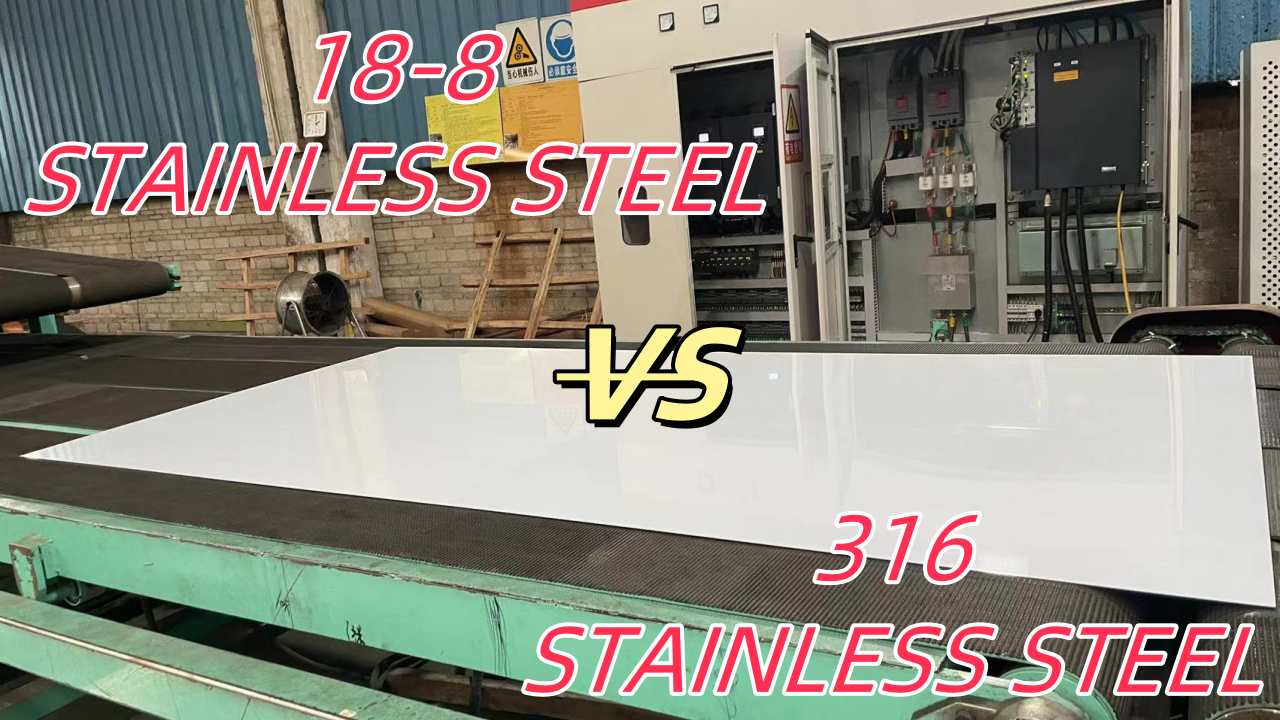At Aoxing Mill, we understand the importance of selecting the right type of stainless steel for your projects. This blog explores the critical differences between 18-8 stainless steel and 316 stainless steel—two of the most commonly used materials in the industry. Each has unique properties and applications, making them suitable for various uses. Whether you’re in construction, manufacturing, or any sector requiring durable and corrosion-resistant materials, understanding these differences can help you make an informed decision.
Definition
18-8 stainless steel is a common austenitic stainless steel alloy, usually referred to as 304 stainless steel. This stainless steel is mainly composed of 18% chromium and 8% nickel, but also contains a small amount of carbon, manganese, silicon and other elements. 18-8 stainless steel has excellent corrosion resistance, ductility and toughness, widely used in kitchen utensils, food processing equipment, building decoration materials and so on.
316 stainless steel is an austenitic stainless steel alloy known for its excellent corrosion resistance. The main chemical composition of 316 stainless steel includes 16-18% chromium, 10-14% nickel and 2-3% molybdenum. Due to the molybdenum content, 316 stainless steel exhibits higher resistance to pitting and crevice corrosion in chloride environments, making it particularly suitable for marine and chemical environments.
Chemical Composition Distinction
Overall, both 18-8 stainless steel and 316 stainless steel are primarily composed of iron (Fe), with similar carbon and chromium contents. One difference in their chemical composition is the nickel content: 18-8 stainless steel contains 8% nickel, while 316 stainless steel contains 10-14% nickel. Another major difference is Mo. 18-8 stainless steel dones’t have Mo, whereas 316 stainless steel contains 2% Mo. The addition of molybdenum makes the chemical structure of 316 stainless steel more stable.
Performance Range
The performance differences between 18-8 stainless steel (304 stainless steel) and 316 stainless steel are mainly reflected in the following aspects:
Corrosion resistance:
18-8 stainless steel (304 stainless steel) : has good corrosion resistance and can resist most oxidizing acids, but is prone to pitting and crevice corrosion in chloride environments. Suitable for applications in general environments and non-corrosive environments.
316 stainless steel : Due to the content of 2-3% molybdenum, it has higher corrosion resistance, especially in chloride and marine environments. It has stronger resistance to pitting corrosion and crevice corrosion, and is suitable for harsh environments such as chemical industry and ocean.
Mechanical properties:
18-8 stainless steel (304 stainless steel) : Good strength and toughness, easy to process and weld, and can maintain good performance at high and low temperatures.
316 Stainless Steel : Mechanical properties are similar to 18-8 stainless steel, but generally has slightly higher strength and better high temperature performance. 316 stainless steel can still maintain good mechanical properties and stability at higher temperatures.
Thermal performance:
18-8 stainless steel (304 stainless steel) : It has good oxidation resistance at high temperatures, but has poor tolerance in high-temperature chloride environments.
316 stainless steel : better corrosion resistance in high temperature chloride environments. Due to the presence of molybdenum, it is more resistant to oxidation and chloride corrosion.
Processability:
18-8 Stainless Steel (304 Stainless Steel) : With good machinability and weldability, it is one of the most common types of stainless steel used in industry and daily applications.
316 stainless steel : The machinability is similar to that of 304 stainless steel, but due to the molybdenum content, the hardness is slightly higher during cutting, which may cause slightly greater tool wear.
Cost:
18-8 Stainless Steel (304 Stainless Steel) : Relatively low cost and one of the most common types of stainless steel.
316 stainless steel : due to the addition of molybdenum, the cost is re
Application Difference
The application difference between 18-8 stainless steel (304 stainless steel) and 316 stainless steel is mainly reflected in their corrosion resistance and mechanical properties, so they differ in specific applications.
18-8 stainless steel is widely used in many fields due to its excellent corrosion resistance, formability and low cost. Common applications include:kitchen utensils,food and beverage processing equipment,architectural decoration.
316 stainless steel is often used in more severe conditions due to its excellent corrosion resistance, especially in chloride-containing environments. Typical applications include:marine equipment,chemical equipment,pharmaceutical equipment and medical implants.
Choosing Between 18-8 and 316 Stainless Steel
Understanding the differences between 18-8(304) and 316 stainless steel is crucial for selecting the right material for your needs.316 stainless steel is commonly used in demanding industrial and marine applications due to its higher corrosion resistance and stability in harsh environments, while 18-8 stainless steel (304 stainless steel) is used for its good overall performance and Lower cost, widely used in various general purposes.
For more detailed information on our stainless steel offerings and to explore which type is right for your next project, please visit our18-8 (304) stainless steel product page
and our 316 stainless steel product page at Aoxing Mill.
Let us help you make the best choice to ensure the success of your projects with high-quality materials tailored to your specific requirements.
Post time: Jul-30-2024





